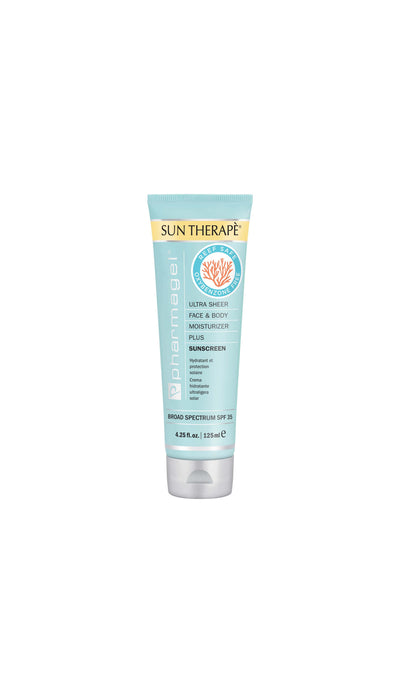Ingredient Spotlight: Glycolic Acid
Glycolic acid is a water-soluble alpha-hydroxy acid (AHA) that has the amazing ability to penetrate the epidermis more quickly, and deeply, than other AHAs. Stimulating new cell growth, hydrating dry skin, and exfoliating dead cells to plump up the epidermis and smooth away fine lines and wrinkles are just a few of the many benefits you can expect when using products that contain glycolic acid.
Glycolic acid is also highly effective for treating a variety of skin conditions not associated with aging, such as acne, dry skin, hyperpigmentation, and dull skin tone. By disrupting the chemical bond that binds dead skin cells together, glycolic acid breaks down and eliminates accumulated dead cells to give you a fresher, more youthful appearance.
In addition, the small molecules characterizing AHAs allow glycolic acid skin products to reach collagen-storing cells deep under your skin. Collagen is a protein essential for skin firmness, suppleness, and elasticity. Aging slows down the production of collagen, which is one of the reasons our skin begins wrinkling, drying out, and losing its firmness after age 50.
Glycolic acid not only stimulates cells into releasing more collagen, but also activates protein production from fibroblast cells. Fibroblasts are responsible for keeping your skin firm, smooth, and supple.
What Types of Skin Problems Can Glycolic Acid Treat?
Exfoliate and moisturize your skin with Pharmagel creams and serums containing AHAs like glycolic acid to improve the appearance of:
Mild to Moderate Acne
Dead cells that remain stuck to your skin will clog pores and hair follicles. Excess oil and dirt trapped in pores and follicles provide a breeding ground for bacterial infections. Exfoliating dead skin cells with glycolic acid skin products unblocks pores and loosens solid buildups of sebum and skin debris.
Photodamage
Age spots, sun spots, fine lines, and uneven skin tone are the most common examples of photodamage. Excessive exposure to ultraviolet radiation damages cellular DNA, fibroblasts, and collagen cells, which usually leads to premature skin wrinkling, sagging, and hyperpigmentation.

Age Spots
Caused by overactive melanin (pigment) cells, age spots emerge on older skin due to UV rays accelerating melanin production. Over the years, excess melanin starts clumping together, eventually forming age spots, freckles, and other types of skin discolorations.
Seborrheic Keratosis
Glycolic acid creams and serums may help reduce hyperpigmentation, including seborrheic keratosis. Noncancerous growths that sometimes look like age spots, seborrheic keratosis spots are light brown to black in color and can appear anywhere on the body. Since seborrheic keratosis only affects the outer layer of your skin, it's treated with cosmetic glycolic acid.
Actinic Keratosis
Actinic keratosis is yet another skin problem that is potentially improved with glycolic acid skincare products. Actinic keratosis differs from seborrheic keratosis in appearance, presenting a scaly, rough-textured, and reddish appearance on the skin. Before using a glycolic acid skin product, always visit your doctor to determine if an actinic keratosis spot requires closer examination. If left untreated, some instances of actinic keratosis can become a squamous form of skin cancer.
Fine Lines, Wrinkles, and Acne Scars
Exfoliating dead skin cells, stimulating collagen production, and retaining water molecules to keep skin hydrated are the three primary ways glycolic acid smooths away fine lines, wrinkles, and acne scars. Applying glycolic acid serums to wrinkles or scars diminishes their visibility by removing accumulations of dead skin cells that contribute to the prominent edges of scars and wrinkles.
Side Effects of Using Glycolic Acid
Some people using cosmetic glycolic acid creams may experience tingling, a slight reddening of the skin, or an initial worsening of the problem. This only happens because the product is dynamic and immediately begins cleaning and exfoliating the skin. Rapidly treating skin issues with glycolic acid accelerates the emergence of excess oil or hyperpigmentation lying under the skin. Normally, your skin begins to improve after two to three weeks of applying glycolic acid skin care products. Results will ultimately give you fresher, cleaner, and younger-looking skin.
Dermatologists recommend glycolic acid products that contain between five to eleven percent glycolic acid and a pH level that is near optimal skin pH level (4.2 to 5.6 percent). When glycolic acid serums and moisturizers are developed for cosmetic purposes, elements such as colostrum and vitamin C are sometimes added to boost collagen formation and promote new skin cell growth.








